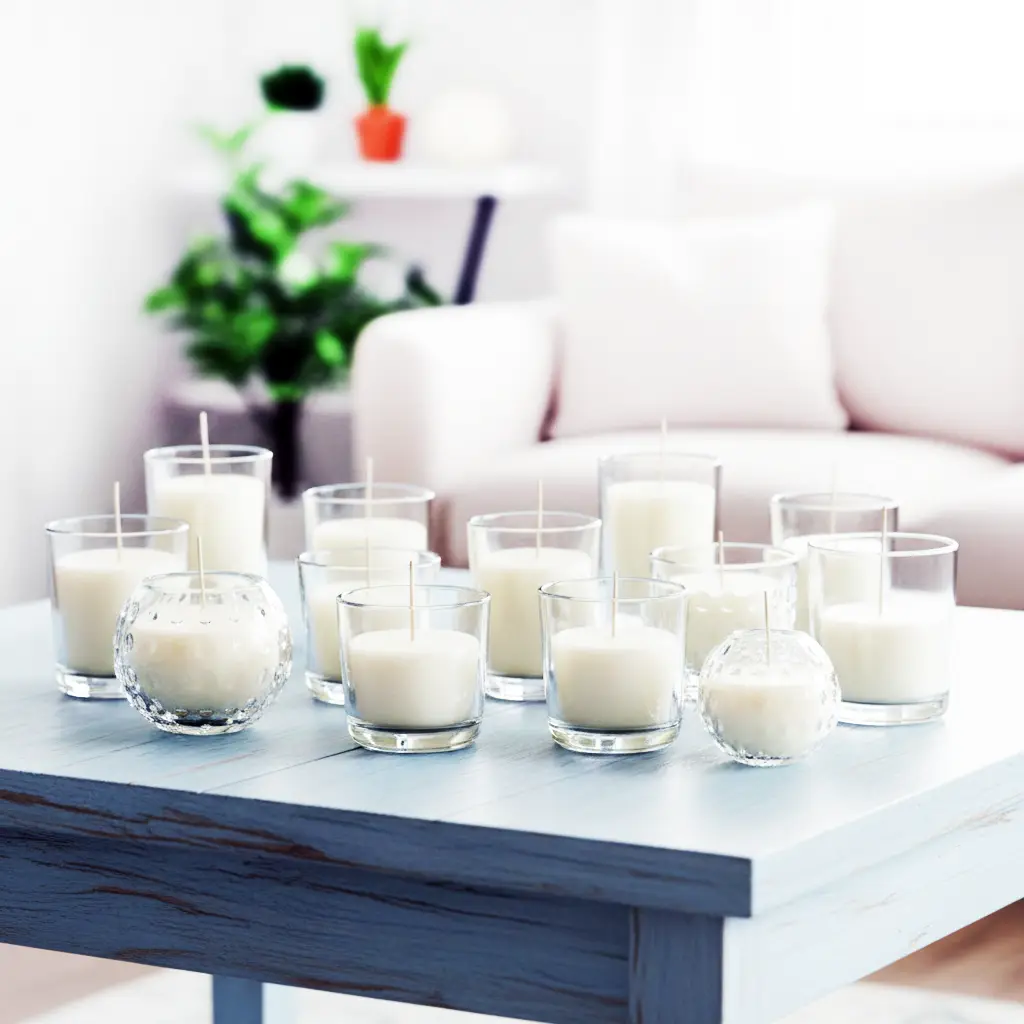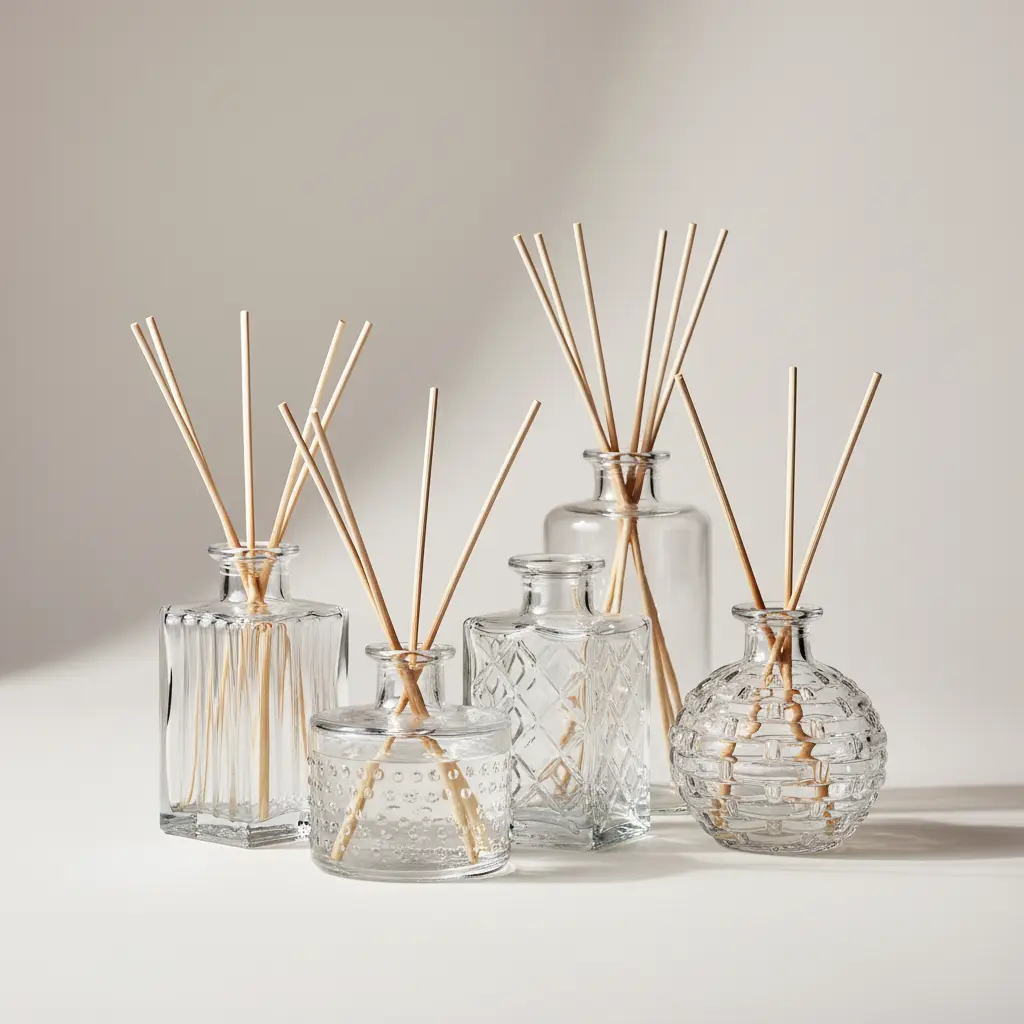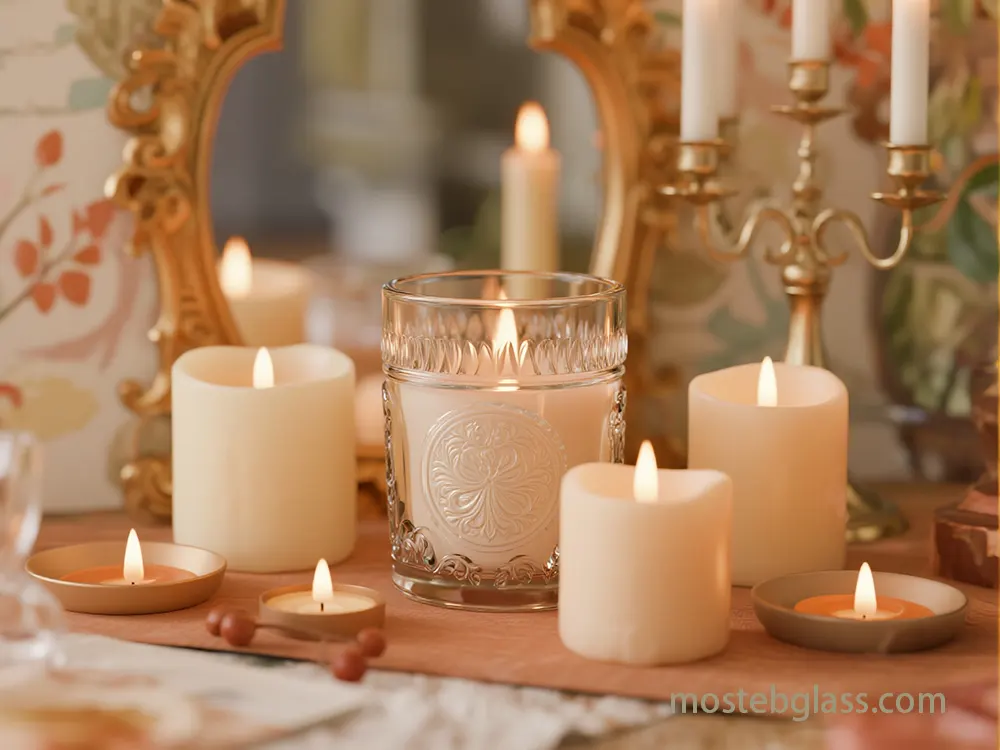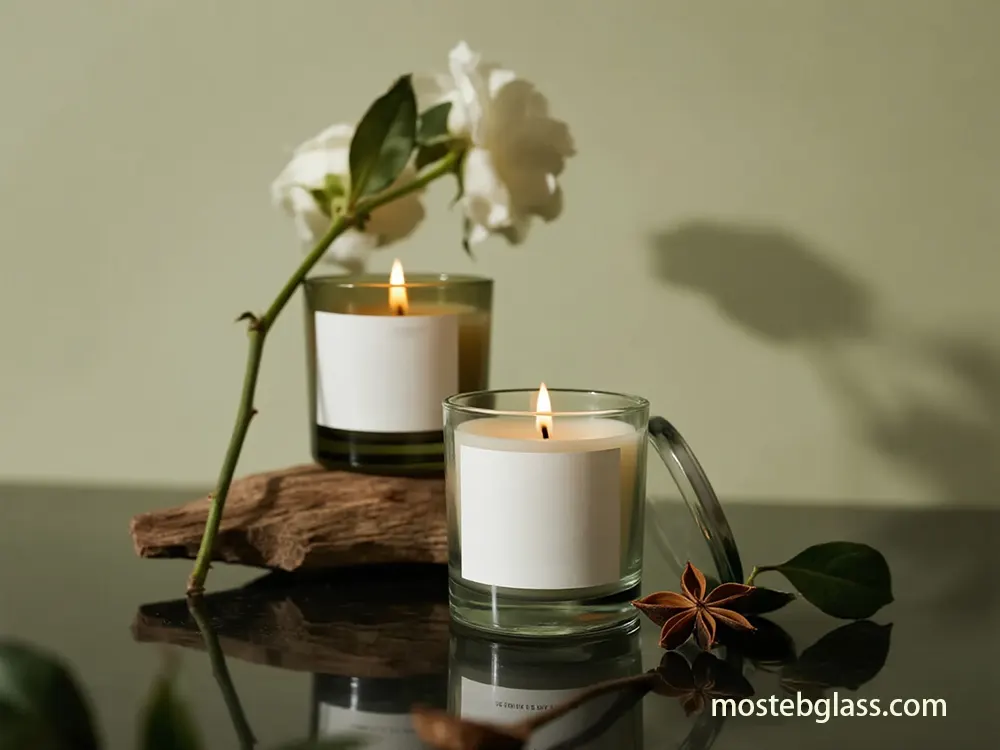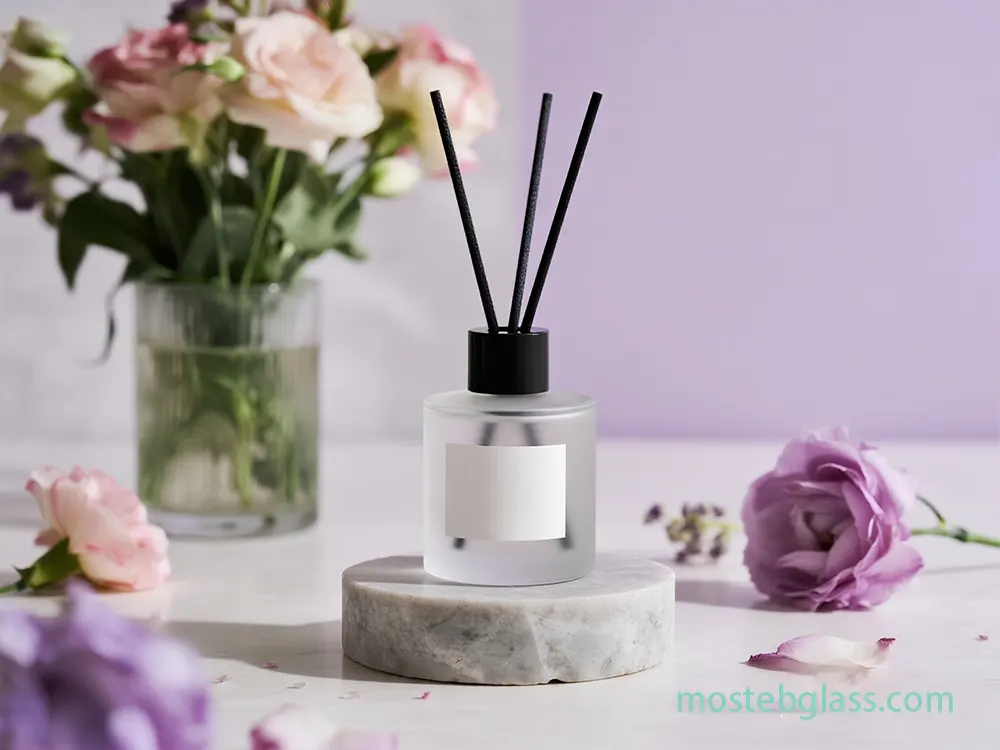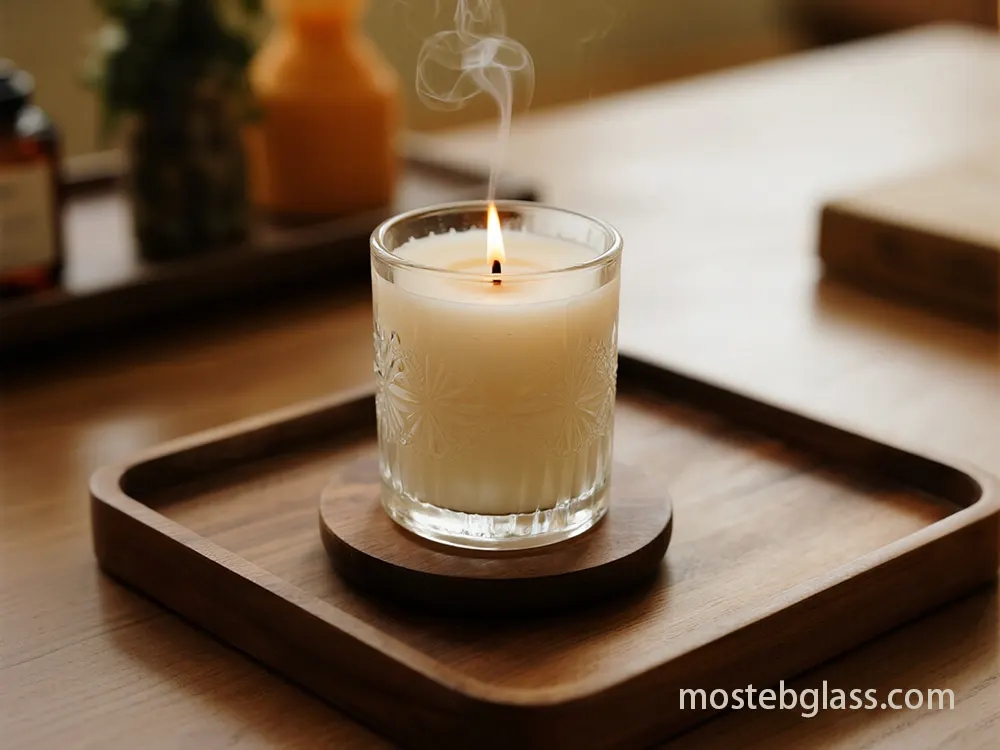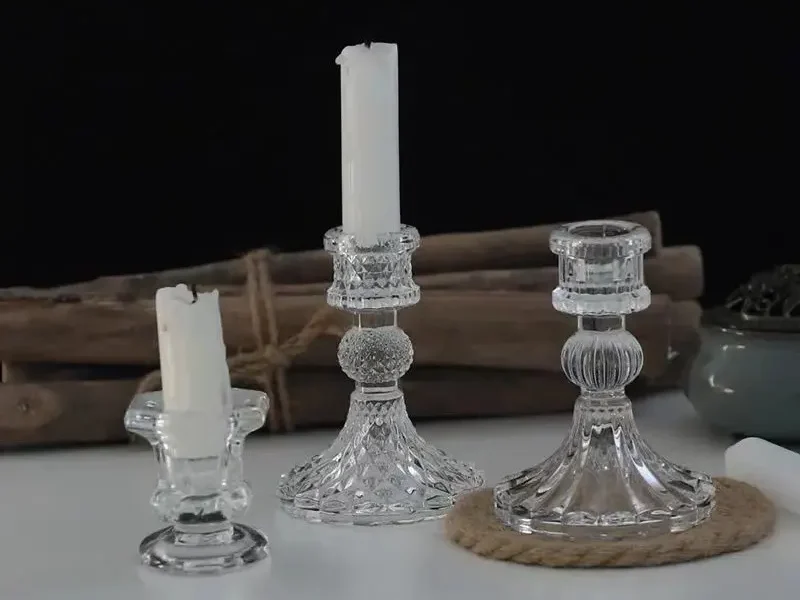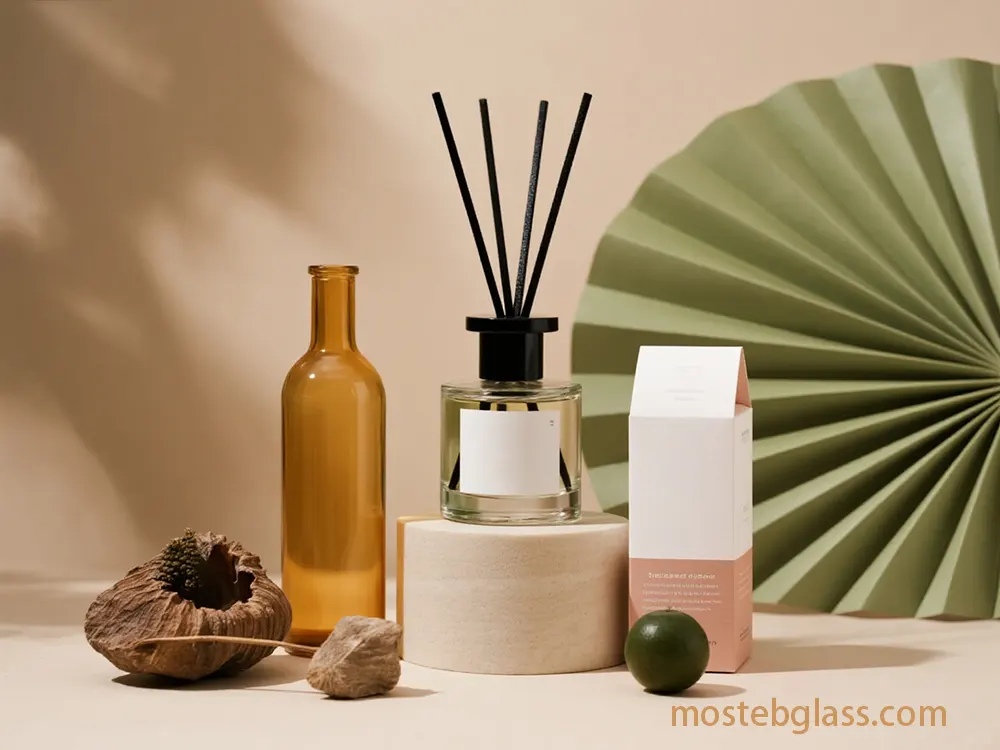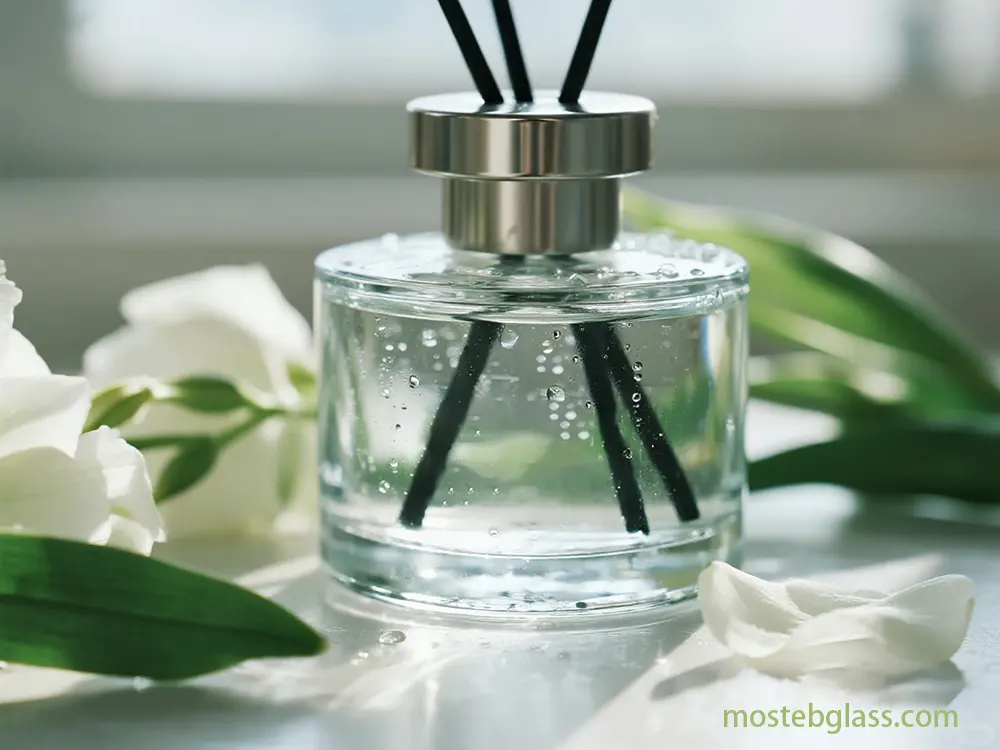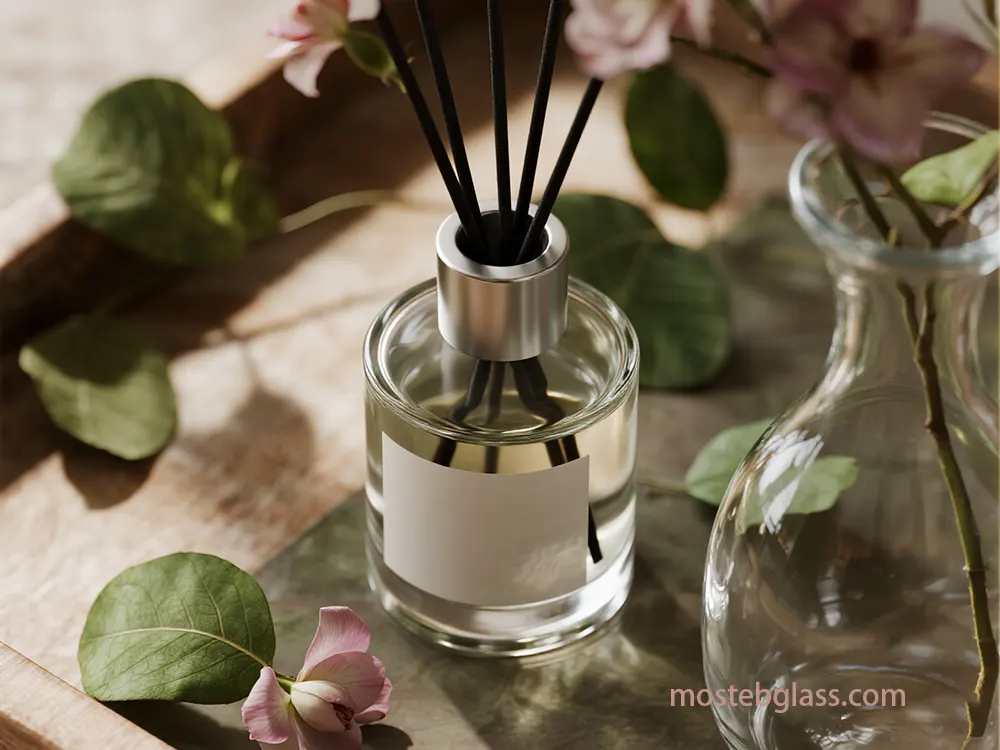Mosteb‘s manual is a detailed comprehensive map aiming at an effective meticulous worldwide search for dependable glass flower vase suppliers. The main aspects covered are product specifications, expectations of trade, sourcing across borders, supplier vetting in detail and adherence to the rules, all of which are the keys to not only achieving, but also sustaining, the partnerships in question.
1. Defining Your Glass Vase Requirements
The success of worldwide sourcing is rooted in the very first step which is defining the aesthetic, functional, and quality aspects of the product, in this case, glass flower vases. This implies that a detailed understanding of glass types, manufacturing processes, and quality parameters is necessary.
1.1. Understanding Glass Types and Their Properties
- Soda-Lime Glass: Generally used and inexpensive (made of silica, soda ash, and limestone), soda-lime glass offers good clarity, durability, and chemical stability (which is good for mass-produced vases). However, it has weaknesses such as low heat resistance, being easily affected by thermal shock, and having lower chemical resistance to acids/alkalines, which may result in the freshening of the flower arrangement becoming contaminated.
- Borosilicate Glass: One of the main components in borosilicate glass is boron trioxide, which makes the glass extremely durable, heat resistant, and clear. It is the best choice for fresh-cut flowers that require hot water since it can handle temperature changes and is resistant to chemicals, scratches, and stains. In addition, it is light in weight, strong, and of high quality, which is the reason why it is mostly used for its contemporary look.
- Crystal Glass (Lead Crystal Glass): A fancy alternative, the lead oxide (or other minerals in non-lead crystal) is the ingredient which increases the refractive index, making the sparkle and prism effects appear. The additional minerals not only help the glass to be workable for intricate designs but also allow the glass to be thinner yet still be strong. Crystal glass is heavy, produces a clear ringing sound, and is ideal for high-end markets and special events.
- Recycled Glass: It is mostly recycled soda-lime glass, thus the glassware industry becomes more sustainable by lessening the need for raw material and energy consumption. The quality is dependent on the source and the process, but recycled glass is attractive because it can be promoted either as a chic solution for the eco-conscious or as the raw material for the repurposed or DIY projects.
1.2. Manufacturing Processes and Their Impact on Design and Cost
Manufacturing methods have a considerable impact on the uniqueness, consistency, and price of a vase.
- Hand-Blown Glass: An expert blows the molten glass with their hands and thus the glass is unique, thicker, heavier, and has artistic (random) imperfections (for example, air bubbles). This process also allows the manufacture of flexible, highly detailed, and custom designs (for example, marbling, fritting). The higher prices reflect the time, skill, and the work of the master craftsmen and thus it is marketed to high-end customers who like the uniqueness of the product.
- Machine-Blown Glass: The machines take the molten glass and blow it into the molds so that the process is very effective, the thickness is the same for all pieces, and the shape is uniform. The glasses are thinner, lighter, and less defective and the price per unit is considerably lower which is the reason why these products are best suited for large-scale production. The level of customization is very limited, though. The price of a mold for machine-glass is generally much higher (USD 2000-3500) than for hand-blown glass (USD 150-500).
- Machine-Pressed Glass: A method that involves using molds and mechanical pressure for high precision, intricate pattern, and great.
1.3. Essential Quality Control Parameters
In fact, from the raw materials to the finished products, it is of a major importance to carry out quality controls.
- Inspection of raw materials: It is the most important part of defect prevention and besides that the materials should be tested for moisture, iron content (high iron causes reddish glass/color differences), and trace elements in strict compliance with the established standards.
- In-Process Monitoring:
- Temperature Control:The temperature of the furnace, for example, is usually controlled every 2 hours, and it is very important to do it if the maximum temperature is about 1675°C for soda-lime glass; by far the main cause of the defective rate is that the temperature is too high.
- Molding Performance: The continuous monitoring of a molding line identifies and solves high-volume production problems, eliminating defects.
- Physical Checks (Post-Production):
- Weight and Dimensions: The weights and measurements (mouth diameter, rim thickness, height) of the randomly chosen vases are done to check whether they meet the specifications or not.
- Volumetric Check: First, vases are weighed, then water is put in them and they are weighed once again in order to calculate the volume against the specifications.
- Wall Thickness Consistency: The uniformity of the wall thickness is very important e.g. for somewhat irregular hand-blown glass whilst machine-pressed glass is usually uniform.
- Perpendicularity: Checking the vase’s horizontal axis is perpendicular to the ground is another point.
- Visual Inspection:
- Optical Clarity Standards: The main points for very good glass are above all transparency and polishing; for clarity checks inspectors use light panels.
- Surface Finish Defects: Vases are checked for defects, lack of smoothness, bubbles, and other surface imperfections. While it is generally accepted that slight imperfections exist in hand-blown glass, the machine-made glass is aimed to be smooth and perfect with the least number of flaws possible.
- Annealing Quality: The glass formed is slowly cooled in an annealing oven to relieve the internal stress and to increase the strength. By poor annealing the internal stresses are caused which make glass vulnerable to breaking.
1.4. Advanced Glass Treatments and Coatings
Present-day treatments and coatings improve the vase’s durability, scratch resistance, and visual appeal.
- Scratch-Resistant Coatings: Surface drag forces are resisted more after surface hardening is done by adding chemicals such as (e.g., silica, titanium dioxide) or thin, tough layers (e.g., silicon dioxide) to the surface of a material. For example, Invisible Shield® PRO 15 leads to scratch resistance raised by 92.9%.
- Hydrophobic/Oleophobic Coatings: They repel the water as well as the oil making cleaning easier and living spots, etching, and pitting out. Invisible Shield® PRO 15 closes the microscopic pores in a surface thus repelling water, soil, and stains.
- Anti-Corrosion Coatings: Are implemented to the product or component to avoid the phenomena of corrosion, etching, and pitting which are caused by environmental factors (gases, acids, moisture).
- UV Resistance: Most of the UV-absorbing coatings offer protection from the UV rays that are harmful and cause fading and discoloration.
- Self-Cleaning Coatings: They have hydrophilic properties which allow them to attract water which then can clean by spreading and washing dirt.
- Decorative Coatings: Add the factors of color, pattern, or privacy to the visual appeal of the product being decorated.
- Nano-Coatings: One of the current trends in technology is the use of extremely thin yet very effective protective layers that do not change the material properties and are capable of improving the material’s durability and appearance.
These treatments extend vase lifespan, reduce repairs, enhance aesthetics (e.g., glossy, colored finishes), and simplify cleaning.
2. Establishing Commercial and Operational Expectations with Your Glass Flower Vase Supplier
Essential commercial and operational expectations help facilitate an untroubled and foreseeable sourcing process. This includes ordered amounts, supply regularity, target prices, and commercially viable lead times.
2.1. Lead Time Considerations When Working with a Glass Flower Vase Supplier
In general, the customization of the goods significantly prolongs the lead time (from order confirmation to delivery) than the standard products.
- Mold Creation and Tooling: The most essential and longest step in the process. It usually takes 1-2 weeks for the prototype molding; in the case of high-precision production molds, from 6 to more than 12 weeks, and this depends on their complexity. Daxin states a 10-day average when 5,000 existing molds are used.Factory mold changes usually take from 2 to 6 hours, or in the case of a full day 38, it takes 6-7 hours. Numerical simulation can be used to predict the amount of shrinkage, thus allowing the machine to be set accordingly which will save time and will result in the product being less affected by shrinkages.
- Glass Manufacturing Process: The glass gob transformation process takes between 10 and 15 seconds, followed by the annealing which takes 1-2 hours.Furnaces, which are used in this process, work non-stop at a temperature of around 1500 °C and it takes approximately 12 days for them to reach operating temperature, thus affecting the flexibility of the process.Hand-blown glass is ideal for small quantities; machine-blown, large-scale production.
- Finishing Processes: After shaping and annealing, the finishing processes (cutting, polishing, etching, coatings) take production time, and the degree of intricacy is directly proportional to the time required.
- Shipping Logistics: Shipping logistics include the whole process from order processing, through handling, to delivery. They are heavily dependent on the transportation mode, distance, and customs.

2.2. Strategies to Mitigate Lead Time Risks
Lead time risks can be significantly lowered by taking timely and appropriate measures.
- Supplier Relationships and Diversification: Reliable, communicative suppliers are a prerequisite to strong relationships. Having several suppliers will reduce the risk of stoppage if one of them encounters problems.
- Inventory Management: Good inventory management keeps production free of material shortages and also cuts storage costs.
- Supply Chain Optimization: Eliminating unnecessary links by consolidating suppliers and optimizing processes makes the supply chain more efficient and thus faster delivery is possible.
- Technology and Automation: Industry leaders can take advantage of sophisticated shipping platforms (real-time tracking), inventory management systems (automatic reordering), and highly efficient transportation solutions (GPS, route optimization) to seamlessly integrate their operations.
- Process Optimization: Efficiency can be improved if the company regularly revises its production schedules, eliminates waste (e.g., waiting times), and standardizes processes (SOPs).
- Design for Manufacturability (DFM): By optimizing product design (DFM) for the simplified geometry and minimized complex tooling, the time spent on mold-making can be reduced.
- Capacity Planning: By engaging with manufacturers early for capacity planning and pre-booking production slots, accurate and predictable lead times can be ensured.
- Buffer Stock Agreements: Even though it is not specifically mentioned for glass vases, one can assume that the maintenance of strategic buffer stocks of commonly used raw materials or components can be a way to prevent delays.
2.3. Impact of Seasonality
The seasonal differences have a notable effect on production schedules and consequently on lead times.
- Holiday Peaks: Shipping lead times as well as freight rates get longer and more expensive during peak holiday seasons because of the high demand.
- Factory Shutdowns: Besides holidays (e.g. Chinese New Year, Christmas) factories shut down as well during major holidays and that is why lead time adjustments are necessary.
- Consumer Demand Trends: The seasonality of product launches can affect the demand for specialized glass packaging, thus potentially resulting in extended lead times.
2.4. Pricing and Incoterms (FOB/EXW)
On what side the cost, risk, and control will be depend heavily on the Incoterms chosen.
- FOB (Free On Board): The seller’s responsibility is until the goods are loaded onto the ship at the port of origin. The buyer takes all the risks and expenses (carriage, insurance, duties, delivery) from there and thus has the control and potential to save on shipping rates.
- DDP (Delivered Duty Paid): The seller pays for all the shipping and logistics charges, including duties, insurance, and the final delivery to the buyer’s location. This mode of transaction is the most convenient and predictable for the buyer but usually leads to higher prices.
- EXW (Ex Works): The seller provides the goods at his/her own location; the buyer takes all the costs and risks from that point, including loading and customs.
Extremely long lead times can raise the costs by 10-20% just because of inventory holding and production downtime.So, buyers should also take total landed costs, including hidden ones, into account when deciding on Incoterms.
3. Navigating the Global Sourcing Landscape
Knowing the changes in worldwide manufacturing and the on top of that advantages, disadvantages, and the effects of geopolitics for the regions, is a must if a one wants to be successful in sourcing strategically.
3.1. Key Global Manufacturing Regions
The regions provide differing advantages and disadvantages in the sourcing of glass vases.
- China: As the leading glassware provider worldwide, China has a well-developed production process, fully integrated equipment, and very strict quality controls (ISO, FDA, BSCI, Sedex certifications) are maintained. The company is able to offer a very diverse range of products from daily to luxurious glass. On the other hand, labor and raw material costs which are rising step by step have been eating away at China’s price advantage so that the price in 2024 will increase by 5%.
- India: Labor-intensive, handcrafted glassware (painted, carved, hand-blown) is India’s strong point as well as the country’s advantage of lower labor costs. The low level of automation hinders mass production and thus the quality is less consistent, there are batch differences, and the breakage rate is high. The supply chain infrastructure is weaker with the presence of power outages and port inefficiencies and thus logistics costs are three times higher than those of China and the delivery times are unstable.
- Eastern Europe (e.g., Poland, Turkey, Czech Republic): Offers the advantages that a European market would need for its supply of glass vases e.g. proximity, shorter delivery, and affordable labor. Producers from Poland are well-acquainted with the requirements of the EU, running efficient lines for the price-sensitive segments. Turkey was very successful in increasing its supply of glass vases to the EU market (7.5% CAGR, 2018-2022).
- Vietnam: It is a new “China plus one” where the country is benefiting from trade agreements such as EVFTA whose goal is to remove most duties. However, the industrial zone is China that supports the infrastructure, and thus the Vietnam industrial zones are left behind, which causes less efficient raw material transport and logistical bottlenecks. Vietnamese SMEs also have to face the tough competition from European goods and that standards like food safety and IP are getting stricter.
3.2. Geopolitical Landscape and Trade Tensions
Policies regarding worldwide trade and geopolitical happenings have great influence on fulfillment chains.
- US Tariffs on Chinese Glass: The US has put considerable tariffs on glass products imported from China. On top of the existing 20% duties, a new 34% levy on industrial glass from April 9, 2025, results in 54% total tariffs on Chinese goods. As a result, China has retaliated. These tariffs significantly increase importer costs, which may cause consumer prices to go up and supply chain disruptions to occur.
- Broader US Tariff Landscape: The US decided to introduce a 10% baseline tariff on most of its imports effective from April 9, 2025. In addition to that, “Reciprocal Tariffs” are valid as follows: 20% for EU, 10% for UK, 26% for India, 46% for Vietnam. The exemption under the USMCA for Mexico and Canada was lifted April 2, 2025. HTSUS often puts decorative glass vases under 7013.99.90.
- Supply Chain Diversification and Reshoring: The disruptions in geopolitics and the economy have forced manufacturers to broaden their supply networks and to do more reshoring in UK/EU markets. Focusing on material availability rather than demand is very important since these disruptions are the causes of the delays and increased costs. To be prepared, companies should have different suppliers, access to alternative logistics, and always be updated on global events.
3.3. Logistical Infrastructure and Trade Facilitation
Without efficient logistics, cost-effective delivery on time would be impossible.
- China’s Advanced Logistics:China has top-notch logistics and a well-developed infrastructure to support it. A new Arctic shipping route makes it possible for vessels from main Chinese harbors to get to European centers in 18 days. The China-Europe Railway Express network extends rail links in such a way that ~19% of China-Europe trade is done by rail and the network grows 35% yearly.
- Logistical Inefficiencies in India and Vietnam:Inefficiency in logistics in India and Vietnam are examples of bad supply chain infrastructure. India has low port and logistics efficiency that is responsible for the less predictable delivery times that are also longer and logistics costs are three times higher than those of China. Vietnam is also facing difficulties with infrastructure mainly in the area of industrial zone support which impacts raw material transport and causes delays.
- The Challenge Behind Glass Packaging:Glass packaging is extremely fragile and will inevitably break sometimes which requires extra protective packaging resulting in some product loss. Being heavier than plastic or aluminum, it raises shipping fees as well as the energy used. Because of its fragility and weight, it requires more careful handling and storage.

4. Vetting Suppliers for Trust and Reliability
Performing a thorough supplier vetting is essential for building reliable collaborations. One should evaluate a supplier not only for financial stability but also for practicing good ethics, being environmentally conscious, communicating well, and protecting intellectual property.
4.1. Financial Stability Assessment
Investigating the financial status of a business partner is a must to keep the partnership alive for a long time while lessening the chance of encountering problems.
- Financial Statement Review: Get the last few years’ (3-5) audited financial statements. Look closely at the trends of the revenues, the profit margins, the cash flow, the capital that is spent, the loans, the net working capital, and any off-balance-sheet liabilities.
- Key Financial Ratios: Work out the ratios of profitability, liquidity (for instance, acid-test ratio), and activity to get a deeper understanding.
- Credit Reporting Services: Use Creditsafe and Dun & Bradstreet to get the credit scores, the recommended credit limits, and the payment histories (e.g., CCJs, late payments).
- Parent Company Guarantees: If it is so, check out the financial situation of the parent company and consider the protection provided by such things as the Parent Company Guarantees or the Banker’s Guarantees, especially if you make an advance payment.
- Continuous Monitoring: Keep a regular check on the financial condition of the business and, if it is a high-risk one, do it more frequently. Also, look through business forecasts and recent management accounts.
- Red Flags: Examples of red flags could be a supplier not willing to let you look at their financial records or a high level of debt compared with equity.
4.2. Ethical Labor Practices
One of the absolutely necessary conditions in the supplier vetting process is to make sure that suppliers provide ethical labor practices.
- Certifications and Audits: Confirm the supplier’s adherence to the international standards and audit bodies: SA8000, amfori BSCI, and Sedex SMETA.
- Key Areas of Compliance: Such standards provide for prohibitions against child/forced labor, safety/health, freedom of association, non-discrimination, ethical discipline, fair working hours, and adequate remuneration.
- Third-Party Verification: EcoVadis is an excellent platform for companies willing to take care of their ESG risks, like human rights and labor practices.
4.3. Environmental Stewardship
It is of great significance that the supplier has made substantial progress in the environmental field to be considered as a viable candidate.
- Sustainable Practices: Make sure their practice is up to standard in those areas such as waste management, energy usage, carbon footprint, emission reporting, and recycling.
- Certifications: You can find the ISO 14001 certificate of environmental management 81 as a proof of compliance for example.
- Chemical Compliance: Take necessary steps to assure that your products comply with the chemical restrictions such as REACH and RoHS, especially if they are components of glass manufacturing.
- Carbon Management: EcoVadis is an enabler of the instruments that help in identifying, tracking, and lowering Scope 3 carbon emissions and in evaluating carbon risk.
4.4. Communication Transparency and Cultural Compatibility
Effective communication and a solid understanding of culture are the keys to success when working internationally.
- Communication Channels: Monitor changes in language capabilities, communication efficiency, and reporting structures.
- Cultural Compatibility: Use cultural compatibility as an indicator for a collaboration that flows seamlessly.
- Red Flags: Some of the red flags for these situations might be slow reactions, avoiding answers, serious problems with the language, and general lack of openness.
- Enhancement Strategies: To overcome the challenges, one can use project management tools, hire local representatives, and regularly schedule video/on-site meetings.
4.5. Intellectual Property Protection
Protection of intellectual property (IP) cannot be left to mere hopes but needs formal agreements and a series of knowing-what-to-do self-proactive-moves.
- Formal Agreements: Using NDAs and explicitly stating in contracts who owns the samples and mold are ways of formalizing agreements.
- Patent Registration: Check patent registrations, and if you are worried, go ahead and register a local trademark/patent (e.g., China).
- Factory Security: Look into solid factory security measures as an assurance that the factory is safe from IP theft.
- Dispute Resolution: Generally, IP disputes resolved through arbitration under the New York Convention have more chances of being enforced than those settled in foreign courts. “Self-enforcing contracts” accompanied by technical controls provide stronger leverage.
4.6. Common Red Flags in Supplier Vetting
There are a number of warning signs that point to the need for more extensive due diligence:
- Communication Issues: Delayed and/or evasive responses, significant language barriers, or a supplier that prefers to work independently are some major communication issues.
- Pricing Anomalies: Extremely low quotes that are significantly below the market average may indicate the quality of the goods is compromised to save costs.
- Documentation Deficiencies: Lack of capability/refusal to provide essential documentation, missing/expired/irrelevant certifications (e.g., ISO 9001, BSCI, CE), or denial of production data are some examples of documentation issues.
- Reputation and References: Bad reputation in the market, negative reviews, unresolved disputes, lack of reliable references, and refusal to connect with past clients are some indicators of reputation problems.
- Operational Inflexibility: Non-provision of samples/prototypes that match the specs or resisting inspections are some examples of operational inflexibility.
- Financial Instability Indicators: Request for full payment upfront or usage of risky methods, unwillingness to share financial records, or a high debt-to-equity ratio are some signs of financial instability.
- Quality and Delivery Issues: Frequent defects in products, a continuous decrease of product quality, delivery timelines that are not clear, and frequent delays are some quality and delivery issues.
- Supply Chain Opacity: Non-disclosure of a reliance on a single overseas vendor for you to get critical components or vague answers about sub-suppliers are examples of supply chain opacity.
- Over-reliance on Buyer Oversight: One supplier who needs the buyer always present, to direct, or solve routine issues is an example of over-reliance on buyer oversight.
- Procurement Fraud Indicators: Most prominent among these are vendor-employee relationships that are unusually close, bidding patterns that are inconsistent, and invoices that are inflated.
4.7. Audits (Remote and On-site)
Verification of the suppliers at the highest level is possible through on-site as well as remote audits.
- On-site Audits: Essential for the inspection of the plant, making appointments with management, observation of work, checking the (age, capacity, maintenance) of equipment, cleanliness, safety, stock, manpower, and production lines, including QC checkpoints.Unannounced audits, usually shorter, focus on product/production and might also include sample testing.
- Remote Audits: Use virtual means (e.g., eQMS, Zoom) to checks of compliance and quality management systems.The main points of remote audits are: thorough pre-audit planning, role/communication definition, using secure platforms, proper document handling, and preparation for a guided virtual tour.Remote audits may be lengthier and require a risk assessment to determine whether they are suitable.
4.8. Verifying Supplier Claims
Claims have to be cross-referenced thoroughly and must include the involvement of third parties besides self-reported information.
- Background Checks: These include background checks focusing on the supplier’s certifications, licenses, and compliance with standards.
- Document Authentication: Authenticate documents by checking expiration dates, verifying issuing bodies, and confirming that the certification scope corresponds to the sourced products. In case of any inconsistencies, it is better to get clarification directly from the certifying bodies.
- Samples and References: To verify quality, track record, timelines, and communication effectiveness, product samples should be requested, and client references should be contacted.
- Third-Party Testing: The most impartial and internationally compliant standards can be materialized if such critical components as material composition, durability, and performance are tested by independent laboratories.
- Public Records: Besides monitoring media for potential issues, look up public litigation databases to find disputes.
4.9. Reputable Third-Party Verification Services
These third-party services can be used for ESG & sustainability supplier assessments:
- Financial Stability: Creditsafe and Dun & Bradstreet (credit reports, risk scores, compliance checks) contribute to financial stability analyses.
- Quality & Compliance: UL Solutions (certification, testing, auditing),ISNetworld (contractor/supplier info management for HSS, insurance, financial data),Pro QC International (SA8000, BSCI, SMETA audits).
- General Sourcing & QA: Mascota Global Solutions (end-to-end supplier verification, management, and quality assurance).
4.10. Legal Frameworks for Contract Enforcement and Dispute Resolution
The necessity of creating clear, bilingual contracts cannot be overemphasized. Among other things, they should mention the law that will govern them, jurisdiction, and dispute resolution.
- Arbitration: Because of enforceability of the New York Convention (150+ countries), it is usually chosen instead of litigation in case of arguments over international contractual relations. Selecting a competent institution (e.g., CIETAC, SIAC) and indicating the seat, language, and governing law are of utmost importance. “Self-executing contracts” with technical supervision provide more significant leverage.
- Litigation: Sometimes, recognition and enforcement of foreign court judgments may take longer (e.g., in China). Nevertheless, local court jurisdiction might be a good option if one is looking for a quick injunctive relief.
- Other Mechanisms: The specification of mediation and expert determination can also be there.
- Problems: There are complications in putting decisions into effect resulting from conflicts between jurisdictions, inconsistencies in procedural aspects, and differences in culture. It would be beneficial to have legal advice from a lawyer who is knowledgeable about international manufacturing contracts and local laws of the supplier.

5. Ensuring Compliance and Quality Assurance
One of the most important things to do to ensure the safety of glass vases is for the products to follow the main standards and comply with the regulations set by the authorities in charge.
5.1. Mandatory and Highly Recommended Certifications & Regulatory Compliance
Importers of goods are required to handle a complicated maze of regulations that are applicable in the different targets markets.
- EU General Product Safety Regulation (GPSR): Any glass vessel made abroad and brought to the EU should be in line with the most recent GPSR (EU 2023/988) coming into force in December 2024. The GPSR orders that all products sold in the EU have to be safe; dangerous products may be turned away or taken off the shelves under Safety Gate.
- EU REACH Regulation: The glass vases should be in the REACH (EC 1907/2006) standard, which limits the introduction of harmful substances, e.g., lead in decorative paints/glazing.
- EU Packaging and Packaging Waste Regulation (PPWR): The new PPWR (EU 2025/40) coming into effect in February 2025 (applying from August 2026) is the regulation for packaging in the EU. It stipulates that packaging must comply with the fundamental production, material, and reusability/recoverability requirements in that it is targeted that all packaging is recyclable by 2030 and a 75% glass packaging recycling rate of 2030 is set.
- US California Proposition 65 (Prop 65): For sales made in the State of California, compliance with Prop 65 is a must, which requires warnings to be given to products that contain chemicals known to cause cancer or reproductive toxicity (e.g., lead, cadmium). In addition, there are specific tests for glassware with decorated exteriors, with limits such as $\le 0.06\%$ lead and $\le 0.48\%$ cadmium (except lip/rim). Wipe tests (NIOSH 9100) and ASTM C927 are the methods specified.
- US FDA Requirements for Food Contact Materials: In case glass vases are used for food or beverage, they must follow the FDA food contact rules (Title 21 CFR). This regulation assumes that components are GRAS, covered by an FCN, or included in 21 CFR Parts 174–178, with strict migration limits.
- US Consumer Product Safety Act (CPSA) and CPSC Regulations: Glass vases are to be governed by the general safety provisions under CPSA. The CPSC is able to recall products that create hazards, for instance, those that may cause cuts if broken.
- ISO 9001 (Quality Management System): Generally, it is not required of a company dealing with general glass vases to have an ISO 9001:2015 certificate, but the company can highly benefit from it. The certificate sets the rules for the standard quality of products, customer satisfaction, and the efficiency of the company’s production process, hence raising the company’s credibility.
- ISO 14001 (Environmental Management System): The main focus of ISO 14001 is on lessening the environmental impact while the standard addresses such things as waste, energy usage, and emissions, thereby showing a firm’s sustainability commitment.
- Social Compliance Audits (BSCI/SEDEX): Most European importers require suppliers to meet the requirements of social compliance such as BSCI or SEDEX, the compliance usually being confirmed through audit.
- EU CE Marking: If the glass articles fall under the regulated EU harmonized norms (e.g. construction glass), marking with the CE sign is obligatory, and the process involves type testing and FPC.
5.2. Process for Verifying Certifications & Documentation
Good support in the form of documents is a must for customs clearance and compliance.
- US FDA Food Contact Materials Documentation: Those who bring food-contact glass products from abroad to the US market need to secure FCNs, DoCs, migration tests reports (from qualified labs), COAs for material composition, and MSDS from OEM suppliers.
- General Customs Clearance Documentation: Customs clearance is based on a set of standard documents that always include Commercial Invoice, Packing List, Bill of Lading/Air Waybill, and Certificate of Origin. Besides these, there might also be other documents like test reports, DoCs (for the EU), and certain permits coming into the picture.
5.3. Potential Penalties for Non-Compliance
Not conforming to regulations might put a company in trouble with their safety measures.
- Severe Consequences: A listing of penalties may include product recalls, import bans, financial penalties, legal repercussions, and major reputational damage. Products that are unsafe in the EU are published on Safety Gate.
5.4. Emerging Regulatory Trends
The rules governing the industry are never the same and they keep changing frequently with new demands.
- EU Digital Product Passports (DPP): DPPs will be required for a lot of products within the EU, and possibly for glass as well, in order to facilitate the flow of information and help the circular economy. Every DPP will indicate a digital record (e.g., NFC chip, QR code) holding detailed data on materials, sustainability, manufacturing history, and EU legislative info. A feasibility study was made public in June 2025.
- EU Carbon Border Adjustment Mechanism (CBAM): CBAM is a tool that is meant to be fully functional in 2026 (money transactions from Jan 1, 2026). The main goal is to charge the carbon content of imported goods. At the beginning, it will cover only certain sectors but the glass industry might be among the energy-intensive sectors to which it will be extended, and the UK is planning to add glass/ceramics by 2027. Embedded emissions will have to be reported by importers.
- Extended Producer Responsibility (EPR) Schemes: The EU PPWR by setting ambitious recycling targets (75% for glass packaging by 2030) and aiming to reduce packaging waste implicitly drives EPR principles. The demand for recycled content is bound to rise and influence worldwide supply chains.
5.5. Specific Testing Protocols for Glass
Apart from general requirements, specific tests to verify product integrity and safety are carried out.
- Lead and Cadmium Content Testing: For U.S. imports, particularly California, glass vases decorated on the outside must undergo testing for lead and cadmium content. This also involves testing the material composition and migration, e.g., ASTM C927, NIOSH 9100.
- Thermal Shock Resistance and Durability: Even if the decorative glass vases are not always required to be equipped with thermal shock resistance, this is still the main QC parameter. Overall durability and resistance to breakage are very important for consumer safety as shown by different examples of CPSC recalls for laceration hazards.
- Stability: Stability, being one of the most important issues of consumer safety, for any freestanding product, is considered to be a part of general safety requirements though it is not explicitly mentioned for vases.
5.6. Proactive Solutions and Anticipated Needs
Mosteb suggests that for compliance and quality assurance a proactive method should be used.
- Digital Compliance Management Systems: Use digital platforms for the management and tracking of compliance documentation, test reports, and certifications per product/shipment. This will be very important for the implementation of DPPs and for the smooth running of customs clearance.
- Life Cycle Assessment (LCA) for Product Design: Perform LCAs on glass vase designs to find the environmental hotspots and then material selection, manufacturing, and end-of-life strategies can be informed thus preparing for upcoming EPR schemes and eco-design requirements.
- Material Innovation for Reduced Chemical Content: Lead a sourcing campaign in which you locate the suppliers who manufacture lead-free/cadmium-free decorating materials and glazes and work with them to get your product free of Prop 65 warnings and to be safe for the users.
- Packaging Optimization for Circularity: Prepare the packaging for a glass vase in compliance with the EU PPWR. The focus should be on the minimum weight, recyclability, and content of recycled materials. Also, consider whether packaging can be reused.
- Carbon Footprint Calculation and Reporting: Take the first steps towards calculating carbon emissions from production and transportation of a glass vase. When the CBAM regulation is implemented for glass products, this information will be required.
- Thermal Shock and Impact Testing for Decorative Vases: Perform in-house thermal shock and impact resistance tests as a means of product durability enhancement and as a way to reduce laceration hazards, thus consumer safety is being addressed proactively.
- Stability Testing: Create in-house stability testing procedures for glass vases (particularly taller/unusually shaped ones) to be able to ensure reasonable safety for consumers and eliminate instances of accidental tipping.
- “Warning-Free” Product Strategy: Set a goal of designing and producing glass vases that are completely free of any regulated hazardous substances so that “warning-free” marketing can be employed thus gaining a competitive edge with health-conscious consumers.
- Blockchain for Supply Chain Transparency: By using blockchain technology you can make a record that is very difficult to change and at the same time very transparent of your entire supply chain (from raw materials to final product). This, in turn, can be a great time saver when it comes to the verification of certifications, chemical content, and sustainability claims, especially in the case of DPPs.
